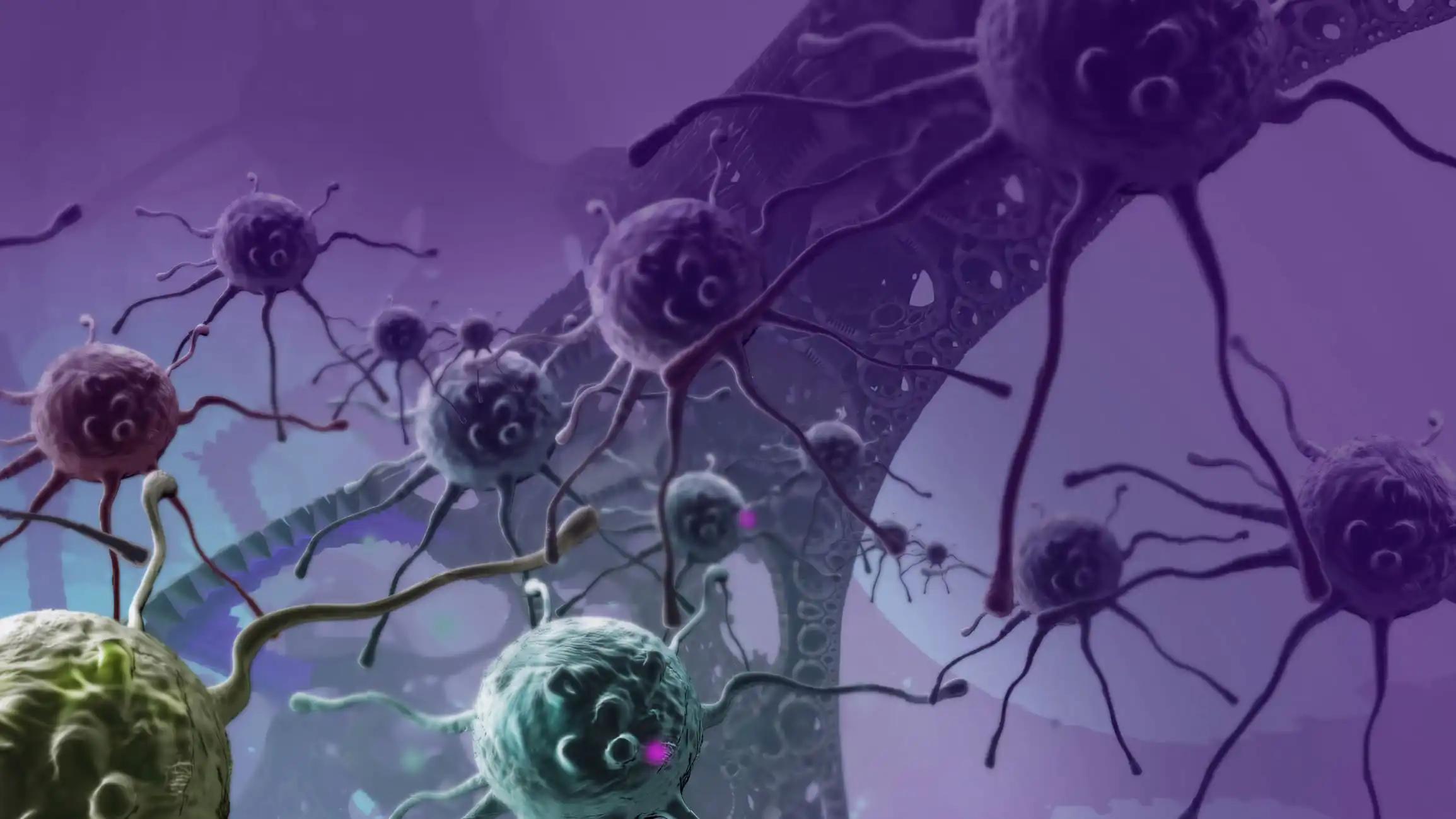KEY TAKEAWAYS
- The phase 3 LIFSCREEN trial was conducted to discover potential predictors of new subsequent cancers among immune and inflammatory cytokines in patients with gTP53m.
- Eligible pts included individuals with gTP53m who participated in the trial at Gustave Roussy from November 2011 to December 2014 and had available frozen serum samples.
- The study found a critical imbalance between Th1 and TFH soluble markers in Li Fraumeni patients carrying gTP53m.
The study aimed to find potential predictors of new subsequent cancers (NSC) among immune and inflammatory cytokines in patients (pts) with germline TP53 mutations (gTP53m) from the LIFSCREEN MRI screening trial.
Individuals with gTP53m who participated in the LIFSCREEN trial at Gustave Roussy from November 2011 to December 2014 and had available frozen serum samples were eligible for analysis. Researchers assessed inflammatory cytokines and chemokines in serum samples collected at the time of enrollment (M0) and after 12 mo (M12) using a multiplex immunoassay of serum analytes (Bio-Plex Pro™ 40-plex, Bio-Rad). The primary purpose was to identify potential relationships between M0 and M12 biomarkers and any non-small cell lung cancer incidence. The study used Wilcoxon-Mann Whitney tests and logistic regressions for statistical analysis.
Among the 107 participants, 42 were eligible and had stored serum. The age was 7-67 yrs, with a median age of 35.5, and 67% were females with—a median follow-up of 100 months (95% CI 83-117). Before joining the study, 24 patients (57%) had experienced cancer, with 7 having breast cancer.11 NSC individuals were diagnosed. At M0, a Th1-like profile with high serum IL-2 levels (more than two pg/ml) (p=0.03 overall) and CXCL9 levels (more than 50 pg/ml) (p=0.01 without a history of cancers) correlated with NSC incidence. According to logistic regression, the Th1 CXCL9 and CXCL10 chemokines had a higher probability of NSC (p=0.03 and 0.04, respectively). M12 found that high levels of the follicular T helper cell CXCL13 chemokine (more than 25 pg/ml) had a protective effect against NSC (p=0.04). Participants who experienced a significant drop in neutrophil and T cell-chemoattracting factors (such as CXCL1 and IFNg/CXCL16, respectively) between M0 and M12 did not develop cancer.
The study revealed a significant disbalance between Th1 and TFH soluble markers in Li Fraumeni patients who carry gTP53m and risk experiencing additional neoplasia. These findings are highly significant and warrant further validation. They could potentially be used to develop effective strategies for intercepting cancer.
Clinical Trial: https://classic.clinicaltrials.gov/ct2/show/NCT01464086
Ahmed, T.B., Fidelle, M., Lahmar, I., Mallard de La Varende, A., Karamouza, E., Zitvogel, L., Goldbarg, V., Caron, O., Delaloge, S. Annals of Oncology (2023) 8 (1suppl_4): 101222-101222. 10.1016/esmoop/esmoop101222.



